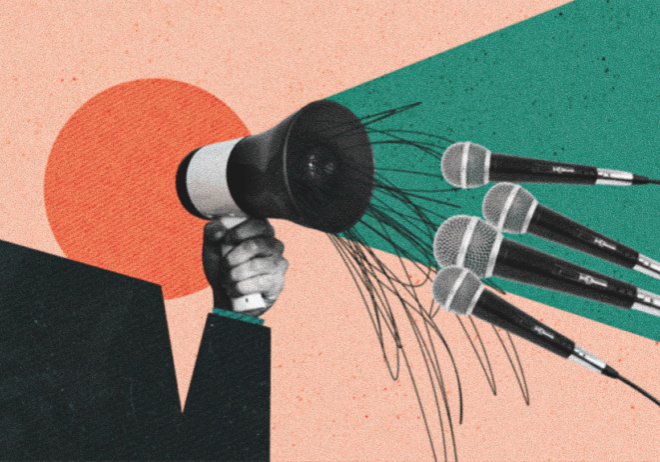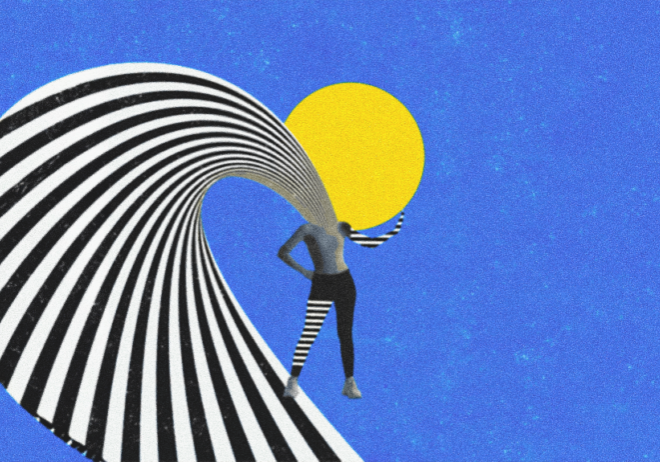
How to Use GenAI in Marketing Without Losing Authenticity
In an era where creativity meets technology, generative AI stands out as a transformative tool for artists, writers, and creators, offering new avenues for innovation across diverse fields. However, a central challenge arises: how can creators leverage this powerful technology without compromising their unique voice and authenticity?
To navigate this landscape effectively, it’s essential to adopt strategies that allow for the integration of AI into the creative process while prioritizing personal expression. This involves using AI as a collaborative partner rather than a replacement, experimenting with its capabilities to enhance rather than overshadow one’s individual style, and cultivating a mindset that sees AI as an extension of creativity rather than a crutch.
By embracing these approaches, creatives can harness the potential of generative AI while preserving the distinctiveness that makes their work resonate.
Understanding generative AI and its impact on creativity
Generative AI refers to algorithms that can produce content—be it text, images, or music—based on user-defined parameters. According to a report by McKinsey, about 63% of companies have incorporated AI into their operations, often citing enhanced creativity and productivity as key benefits. However, many creatives express concern that using AI could lead to homogenised outputs devoid of personal flair.
To avoid falling into this trap, it’s crucial to perceive generative AI not as a competitor but as a collaborator. Your distinctive style remains the cornerstone of your work; AI simply serves as a tool to amplify your creativity.
Embracing the role of curator
One of the primary ways to integrate generative AI into your workflow is by adopting the role of a curator. When you employ AI tools, think of yourself as an editor rather than a creator. Here’s how to do it:
1. Define your core message and voice
Before utilising AI, clarify what you want to convey. What themes resonate with your work? What emotions do you wish to evoke? For instance, if you’re a poet focusing on themes of loss and longing, feed those specific words and phrases into the AI, guiding it to generate tailored responses.
2. Filter and refine
Once the AI generates content, sift through the outputs. Identify pieces that align with your vision and modify them to suit your voice. A study by Stanford found that 53% of creatives who engage with AI reported that it helped them discover new angles for their work, while still allowing room for personal input.
Finding balance through hybrid creation
Co-creation is another aspect that can foster authenticity while making use of generative AI. By blending human intuition with machine-generated outputs, you can create something that feels both innovative and genuine.
1. Collaborate with AI in real-time
Consider using AI tools in brainstorming sessions. For instance, platforms like OpenAI’s ChatGPT can assist in generating ideas or plotlines during writing. By engaging with the AI actively, you shape its contributions rather than merely accepting them.
2. Supercharge your editing process
AI can also aid in refining existing drafts. Tools like Grammarly and ProWritingAid can enhance clarity and offer suggestions without altering your voice. In fact, research from Adobe indicates that 82% of creatives believe technology allows them to be more efficient and focus on the aspects of their work that fuel their passion.
Building a feedback loop
Feedback is invaluable in any creative process. Using generative AI can facilitate a more dynamic feedback loop.
1. Gather insights from the AI
Utilise AI to analyse audience engagement. For instance, platforms like Hootsuite can provide insights into which social media posts resonate most with your audience, helping tailor future creations without compromising your style.
2. Iterate based on feedback
After sharing your work, pay attention to critiques. Incorporate constructive feedback—both from human sources and AI analytics—to iterate and improve, maintaining your authentic voice throughout.
Staying true to your authentic self
At the end of the day, it’s essential to hold onto your essence as a creator. Here are some tips to ensure your work doesn’t lose its authenticity in the face of technological aid:
1. Keep a personal journal
Document your thoughts and feelings outside of your creative process. This can serve as a reference point when creating with AI, ensuring that your outputs retain your true emotions and perspectives.
2. Rediscover your passion
Regularly engage in activities that inspire you—taking a nature walk, visiting an art gallery, or reading diverse genres. Infusing new experiences into your work will keep your creativity fresh and personal.
Harnessing Generative AI While Preserving Authenticity in Creativity
To integrate generative AI successfully into your creative workflow, it’s crucial to first understand its role; generative AI encompasses machine learning algorithms that create new content based on input data. While a McKinsey & Company report indicates that around 60% of businesses are using these technologies to boost productivity, many creatives hesitate due to fears of losing originality.
Recognizing AI as an enhancement rather than a replacement is vital, as it can offer fresh perspectives guided by your creative judgment. Setting clear boundaries is equally important; think of AI as a brainstorming partner rather than a creative engine, using it for prompts or thematic inspiration while retaining personal insights for your work.
Maintaining your distinctive voice is key to authenticity; to prevent outputs from sounding robotic, invest time in understanding your style before incorporating AI, ensuring that your personal flourishes and perspectives shine through. Editing is another crucial step; AI outputs should be seen as foundational rather than final, allowing for critical engagement that aligns the content with your unique ethos.
Infusing your work with emotional resonance is essential, as studies show that audiences engage more with emotionally charged content. Allowing room for experimentation and iteration with generative AI can lead to richer outcomes; by testing different applications and refining your projects over time, you can enhance authenticity.
Finally, sharing your creative journey, including the integration of AI, fosters genuine rapport with your audience; platforms like social media and blogs can showcase not just polished results but also the challenges and triumphs of your process, enhancing transparency and relatability in a world where 72% of consumers value authenticity.
Elevator pitch
Integrating generative AI into your creative process doesn’t have to mean sacrificing authenticity. By curating AI-generated outputs, collaborating in real-time, leveraging feedback, and staying grounded in your unique voice, you can create a harmonious symbiosis between human creativity and artificial intelligence.
The future of creativity lies in collaboration; embrace it, and watch your artistry flourish without losing the essence that defines you.

